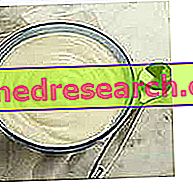Food frauds are divided into two types: health fraud (affecting the health of the consumer) and commercial fraud (only damaging it economically).
Health Frauds
These are facts that make food substances harmful and threaten public health.

The crime also occurs only because it exposes (putting on the market) dangerous substances, even if they have not yet been sold, or even if it is a distribution.
A classic example of health fraud is the adulteration of wine with methanol or milk with melamine.
Commercial Frauds
(Article 515 of the Criminal Code)
Commercial fraud damages the consumer's contractual and property rights.
This is the case in which, in the exercise of a commercial activity, the "delivery to the buyer of a thing for another, or different from that declared or agreed upon by origin, provenance, quality or quantity" takes place.
There is no alteration of the quality of the food such as to make it harmful, but an illicit profit to the detriment of the consumer.
To set up a fraud on the market, it is also sufficient a small difference about the origin of the product or the origin, or the preparation system, or the quantity (typical case is the so-called "sale for tare goods", as when the grocer weighs cunningly sliced without subtracting the tare of the card ").
One of the most widespread commercial frauds concerns rice: the producer can play on the percentage of broken grains (maximum limit of 5% set by law), or on their quality (grains of less valuable varieties) or origin.
Only in the first half of 2000, as many as 590 of the 4, 802 food companies and catering establishments controlled by the Central Inspectorate for the repression of fraud at MIPAF (about 12.3 percent), were found guilty of sophistication, adulteration, cheating.
The record of infractions between the products is undoubtedly due to rice, with 29.2% of the samples examined irregular, followed by milk and cheese (outside the 18.8% of the samples), from vegetable preserves (16.8% ), liqueurs and distillates (13.6%), honey (12.9%), olive oils (10.1%) and seeds (9.5%), wine, musts and vinegars (9.1%), from flours and pastas (8.1%).
Let's look at some examples:
Buffalo mozzarella made with cow's milk added to buffalo milk.
Honey, food at risk both of commercial frauds (millefiori marketed as monoflower) and health (that coming from non-EU countries often contains phytosanitary residues not allowed in Italy but allowed in producing countries).
Olive oil: by adding a few grams of chlorophyll (a natural pigment) to hazelnut or peanut oil you get a product very similar to the original. Olive oils from other countries, such as Tunisia or Spain, are frequently traded as Italian. The same goes for canned tomatoes and vegetable preserves.
Balsamic vinegar of Modena that comes from Afragola.
Many tricks also for typical products: in the case of cheeses, a Roman company has become a leader in Lazio thanks to a Norcia cheese that had nothing to do with the Umbrian town.
Attention also to Chinese restaurants, in some cases they used genetically modified soybeans without warning customers.
The list of food frauds discovered by NAS (Anti-Sophistication Core of the Carabinieri) does not stop there; let's see further examples:
Cheeses
* cheeses made with reconstituted powdered milk (permitted in other countries);
* pecorino cheeses containing more or less high percentages of cow's milk;
* buffalo mozzarellas containing higher or lower percentages of cow's milk;
* attribution of the designation of doc cheese to common cheeses;
* sale of cheeses of different origins, and perhaps foreign, as typical or with denomination of origin .
Milk
* different fat content than stated;
* not allowed restoration treatments;
* fresh milk obtained from previously pasteurized milk;
* milk obtained from the reconstitution of powdered milk .
Honey
* addition of sugars of other origin;
* sale of a honey of a botanical origin different from that declared;
* sale of non-EU honeys for Italian honeys .
Oil
* extra virgin olive oil containing refined oils, both olive and seed;
* oils with analytical levels that do not meet the requirements set by EU regulations;
* variously colored seed oils that can be passed off as olive oils .
Pasta
* use of soft wheat flours (compromises the organoleptic qualities of pasta);
* use of other less expensive cereals (and consequent quality decline);
* use of poor quality or damaged semolina;
* addition of dyes or chemical additives to imitate special pasta or egg pasta or to mask the type of flour used .
Rice
* lower quality variety than indicated;
* mixture of different varieties;
* sale of rice from abroad as if it were a national product;
* badly selected rice with the addition of broken grains and foreign elements, badly preserved or old .
eggs
* eggs with a preferable consumption date greater than 28 days allowed;
* different eggs by weight category;
* eggs stored in the fridge and sold as fresh .
Wines
* wines obtained from the fermentation of sugars of a different nature from those of grapes (a practice prohibited in Italy);
* addition of prohibited substances: alcohol, antifermentatives, flavorings, dyes;
* quality lower than that stated on the label;
* excess sulfur dioxide or alcohol content lower than expected.



